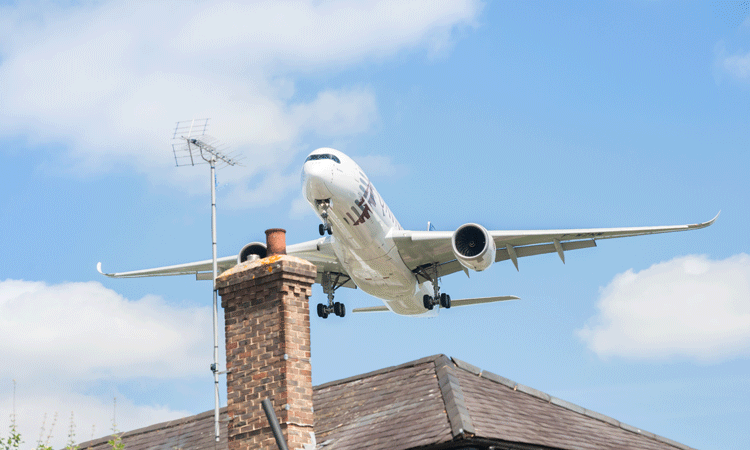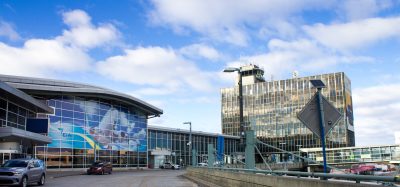Aviation noise and how to deal with it on the ground
- Like
- Digg
- Del
- Tumblr
- VKontakte
- Buffer
- Love This
- Odnoklassniki
- Meneame
- Blogger
- Amazon
- Yahoo Mail
- Gmail
- AOL
- Newsvine
- HackerNews
- Evernote
- MySpace
- Mail.ru
- Viadeo
- Line
- Comments
- Yummly
- SMS
- Viber
- Telegram
- Subscribe
- Skype
- Facebook Messenger
- Kakao
- LiveJournal
- Yammer
- Edgar
- Fintel
- Mix
- Instapaper
- Copy Link
Posted: 13 June 2022 | Alena Maximova | No comments yet
Alena Maximova, Communication Officer at the Airport Regions Council, speaks to International Airport Review about noise abatement and how to tackle it.


Aviation noise impacts residents around any airport. Noise affects their quality of life, from comfort levels to mental and physical disorders. Also, noise hinders urban development and devalues the real estate value of houses and properties.
Over the past 50 years, commercial aircraft have reduced their noise output significantly, plus better land-use planning, operational procedures and restrictions improved the noise impact. Despite all efforts, the problem is still there mainly because of two factors:
- An increased number of flights neglected decreased noise output
- Cities are growing and moving closer to airports.
How to manage noise?
The Airport Regions Council (ARC) sees Aviation Noise Impact Management (ANIMA) project results as a very suitable example of how this problem can be managed to approach this problem from the ground.
Aviation noise management is usually performed in the frame of the ICAO Balanced Approach, and ANIMA states that affected communities should be involved in the noise management process. This article will analyse non-acoustic management only and will not review any measures described in the Balanced Approach.
The airport noise management challenge arises because the problem unites acoustic and non-acoustic factors, i.e., annoyance, depression, and lack of information, which cannot be taken and treated as acoustic factors. ANIMA researchers stated that comprehensive noise management approaches should directly address such factors through communication and engagement initiatives (Heyes et al., 2020).
The most apparent steps airports and public authorities take toward communities are compensation and sound insulation. There are many examples when airports create sound compensation schemes for citizens, but it is not enough in some areas when there are a lot of night flights and people sleep with their windows open. Plus, airports are building additional runways, and more flights will increase the number of affected people. Therefore, there is a need to consider noise management as a process and iterative cycle rather than a measure performed once.
There is a lack of guidance on the development of noise management actions. Every community, airport and situation are different. Noise management at this level requires some unknown issues to be discovered, and that’s why ANIMA suggests implying Design Thinking (DT).
DT is not an exclusive property of designers — everyone can practice it. DT is a problem-solving, user-centric approach that helps identify unknown problems and deal with them.
Many techniques exist on how to facilitate the DT process. All of them can be down to simple, repetitive actions: Discover → Define → Develop → Deliver.
The first step, ‘discover’, can be problematic simply due to the lack of knowledge. This is how ANIMA can help.
Tools and information
- ANIMA noise platform compiles, selects, structures, and organises not only the information generated along with the project but also gathers basic knowledge to facilitate the dialogue between different stakeholders and communities’ representatives:
- Noise Management Toolset helps airports and authorities compute noise maps and awakening indexes to test the impact of different scenarios with various fleet configurations and flights.
- ANIMA Book collects recommendations for EU, national and local policymakers, and airport and aviation authorities.
Next steps
To bring up this topic and specific approach to the non-acoustical noise management, ARC thinks that EU institutions should recognise aviation noise as the main environmental problem of aviation growth and keep the fight against aviation noise, considering its interdependencies, as one of the central goals in all programmes of research, development, and transfer of best practices in the following years. There is also a need to create a legal framework that can stimulate, facilitate, and oblige stakeholders to apply existing best practices in the fight against aviation noise and its impact on quality of life.
Local authorities can be a mediator between airports and communities and do more non-acoustic noise management. This cycle should never stop because we will soon face the noise problem coming from new aircraft concepts: remotely piloted aircraft and drones.
ICAO and EASA are currently preparing certifications and regulations for these new concepts, and there is no framework or system to regulate this new type of noise.
ARC thinks that EU institutions should recognise aviation noise as the main environmental problem of aviation growth and keep the fight against aviation noise, considering its interdependencies, as one of the central goals in all programmes of research, development, and transfer of best practices in the following years”
Beyond and through the highly demanded preparation of a complete policy and regulatory plan, the co-operation shouldn’t restrict to the three main actors of the aviation industry, ATM, airport, and airline; an even more comprehensive collaborative work is needed. Active co-operation and strong involvement are also essential with medical institutions, general practitioners, and specialists in the airport vicinity, focusing on diseases and symptoms caused by lack of sleep due to airport noise.
The establishment and operation of urban air mobility and drones could increase the problem with the extended air traffic in low-level airspace.
The airport and airline industries need to be technically ready for this novel traffic situation. From the ATM industry side, an even more complex trajectory plan could support the efficient integration and consider locals’ exposure to aircraft noise around airports in taking off and landing.
According to the EU Better Regulations Guidelines, the concerning regulation needs to work in a targeted way that allows political decisions to be prepared openly and transparently, informed by the best available evidence, including via the extensive involvement of stakeholders. Measurable facts like the results of adequate surveys, fitness checks and medical examinations from these local health care institutions could provide robust evidence for locals’ vulnerability.
Biography


Related topics
Air traffic control/management (ATC/ATM), Aircraft, Airside operations, Noise abatement, Social responsibility, Sustainability, Sustainable development
Related organisations
Airport Regions Council (ARC), European Aviation Safety Agency (EASA), International Civil Aviation Organization (ICAO)


















